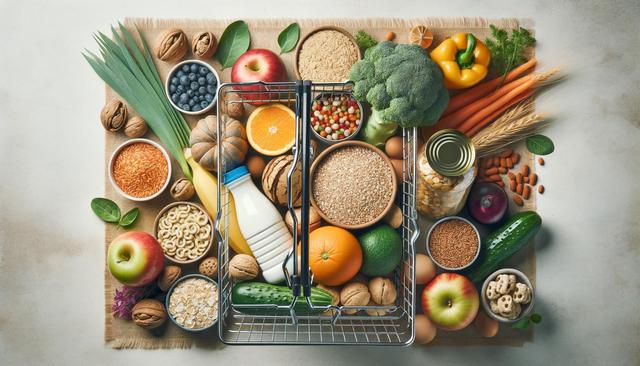
Smart Grocery Shopping: Tips for Staying on Budget
Plan Before You Shop
One of the most effective ways to stick to a grocery budget is to plan ahead. Creating a weekly meal plan and corresponding shopping list helps prevent impulse buys and ensures that you’re only purchasing what you need. Start by checking what you already have at home to avoid buying duplicates. Then, look at grocery store flyers or apps to identify current promotions or discounts. Planning meals around sales can result in significant savings. Additionally, consider organizing your list by store sections to make your trip more efficient and reduce the temptation to stray from your list.
When planning, prioritize versatile ingredients that can be used across multiple meals. This reduces waste and stretches your grocery dollars further. For example, a bag of rice can serve as a side dish, a main ingredient in stir-fries, or a base for burrito bowls. Similarly, canned beans and frozen vegetables are affordable, long-lasting, and highly adaptable. Keeping these staples in mind can help you build a flexible and cost-effective meal plan.
Shop Smart in the Store
Once you’re in the store, sticking to your list is key. However, remaining flexible can also lead to deals when you spot unexpected markdowns. A good rule of thumb is to shop the perimeter of the store first—this is typically where fresh produce, dairy, and meats are located. These items are generally healthier and less processed than those in the center aisles, which can also help you avoid higher-priced, convenience foods.
Pay attention to unit prices, which are usually listed on the shelf tag. Comparing unit prices between different brands or package sizes can help you find better value. Store brands often offer the same quality as national brands at a lower cost. Also, avoid shopping when hungry, as it increases the likelihood of buying unnecessary snacks or high-priced items. If you find yourself tempted by an unplanned item, ask yourself if it fits your meal plan or budget.
Buy in Bulk When Practical
Buying in bulk can be a great way to save money, especially on items with a long shelf life. Dry goods like pasta, rice, oats, and flour are generally cheaper per unit when purchased in larger quantities. However, it’s important to only buy in bulk if you have the storage space and will actually use the items before they spoil.
For perishable goods, consider freezing portions to extend their usability. Meats, bread, and even some fruits and vegetables can be frozen for later use. Bulk purchases also work well for household staples such as toilet paper or cleaning supplies, which can help free up your grocery budget for food-related purchases. Be cautious not to buy bulk items just because they’re on sale—if they don’t fit into your meal plan or go unused, they’ll ultimately be a waste of money and space.
Use Coupons and Rewards Programs
Coupons and store loyalty programs can provide extra savings, especially when combined with sales. Many stores offer digital coupons through their websites or mobile apps, making them easy to access and apply at checkout. Taking a few minutes before your shopping trip to review available coupons can lead to noticeable savings over time.
In addition to manufacturer and store coupons, consider joining grocery store rewards programs. These often provide personalized discounts based on your shopping habits, as well as points that can be redeemed for future discounts or free items. Some credit cards also offer rewards for grocery purchases, which can be a helpful way to earn cashback or points if used responsibly. Just be sure not to overspend in an effort to earn rewards.
Cook More, Waste Less
Cooking at home is almost always more cost-effective than eating out or buying pre-packaged meals. Preparing meals from scratch allows you to control portion sizes, ingredients, and ultimately, your grocery spending. Cooking in batches and freezing leftovers can also save time and reduce the number of trips to the store.
Food waste is another area where budget-conscious shoppers can make a big impact. Store food properly to extend shelf life and get creative with leftovers. For example, vegetables that are slightly past their prime can be used in soups or stir-fries. Bread that’s gone a bit stale can be turned into breadcrumbs or croutons. By maximizing the use of the items you buy, you reduce both waste and the need for frequent grocery trips, helping stretch your budget even further.
Conclusion: Build Sustainable Habits
Staying on budget while grocery shopping is achievable with a little planning, smart habits, and a focus on long-term savings. By meal planning, shopping strategically, using discounts, and reducing waste, you can make each grocery trip more cost-effective and efficient. These practices not only help manage your current expenses but also build sustainable habits that support your financial goals over time. With consistency and awareness, grocery shopping on a budget can become a rewarding and empowering part of your weekly routine.